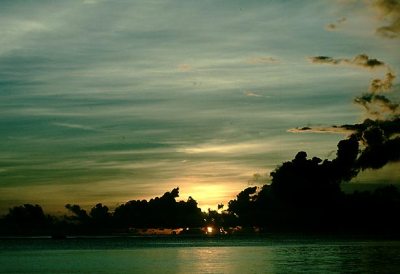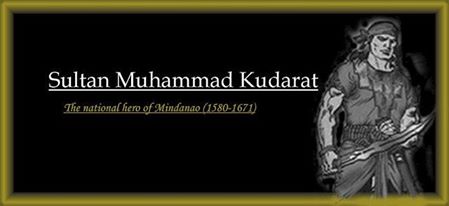27 Oct The Arrival of the First Spaniards in Cagayan de Oro City
As mentioned in the previous articles, Huluga and Himologan along the Cagayan River became one and the same settlement now called Himologan. It was a fast growing settlement village with around 500 inhabitants that did crop agriculture in the surrounding plains, fishing in the Cagayan River and its river mouth, and traded with kingdoms and principalities such as Butuan, Lanao, Maguindanao, and Cebu. It paid off tributes to Maguindanao rather than be converted to Islam since the native Himologans didn’t want to offend their “Diwata gods” and shaman priests. They had a system of governance, culture, dress, traditions, songs, dances, religions, and even writings.
Starting around 1565, all this would change with the coming of the first Spaniards.
It should be noted that many history teachers speak of the “coming of the Spaniards” as if they arrived in large droves and waves and immediately set shop in the Philippines. On the contrary, the coming of the Spaniards and the country’s eventual fall into colony status for Spain took a long process that spanned almost a hundred years. It should also be noted that the Spaniards were not the first white men to set foot in Cagayan. Chinese ambassadors and traders visiting Butuan have been recorded to have visited Himologan briefly. A small Portuguese carrack was also recorded to have put ashore in Butuan, Camiguin, and near Himologan.
Students of Cagayan history must also try to imagine how the Spaniards would attempt to send expedition after expedition in the hope that most of these would reach their destination and set up settlements that would be the stepping stones for evangelization, the first step towards colonization. Expeditionary fleets usually numbered around 5 to 10 ships. Each Spanish Caravel or Carrack could only carry 60 to 70 persons at most. When the Spanish Galleons were created in the 16th century, they could only carry 150 persons at the most. And yet it was this slow trickle of caravels, carracks, and galleons that brought priests and conquistadors that would bring the Philippines to its knees as a Spanish vassal. It also takes around 3 months to sail from Spain to the Philippines during that period.
The Exploits of Lapu-Lapu
Even before 1565, the people of Himologan had already heard the news of Lapu-Lapu’s defeat of the king of Cebu and the death of Ferdinand Magellan through the different trade routes from and to the Visayas and Butuan. Antonio Pigafetta, the Italian chronicler traveling with the Magellan expedition, clearly describes either Butuan or Camiguin Island as the site of Magellan’s first mass as compared to Limasawa.
In March of 1565, an expedition led by Miguel Lopez de Legazpi arrived in the Philippines. They even moored off Camiguin Island after learning about Butuan and Himologan from Chinese traders. However, he took no steps to land in Cagayan.
Christianizing Mindanao
In 1609, the first Spanish settlement in Mindanao was set up in Tandag, Surigao (some records mention Caraga, Surigao) in order to begin the Christianization of the tribes there.
The work of evangelization however, was slow paced; Butuan was only wholly Christianized by 1613, and so Bishop Pedro Arce of Cebu (from whom the Arce clan in Cagayan de Oro originated) assigned 8 Augustinian Recollect priests to speed up the evangelization work in Mindanao. From the converted Butuanons the priests learned of Himologan.
In 1622, Fray Juan de San Nicolas and Fray Francisco de la Madre set sail for the Cagayan River. They stopped in Camiguin and sent word to Salangsang, the Himologan chieftain, for permission to enter the settlement. When Salangsang refused, someone remembered that the chieftain’s grandmother, Magdalena Bacuya (her Christianized name) was a converted Christian living in Butuan. They sent for Bacuya who immediately travelled to Himologan to convince her grandson to welcome the priests.
Upon their arrival in Himologan, Nicolas and de la Madre were given a corner of Salangsang’s house where they could live. However, each day, the priests had to carry wood up the promontory and help in the fishing and planting activities. Eventually, their hard work endeared them to the inhabitants and Salangsang slowly opened up to the priests and their preaching. Slowly, the rulers and people of Himologan were Christianized; children were soon receiving full instruction on Christian doctrine. Mass was being said regularly below the promontory.
The Wrath of Kudarat
Soon however, news of this conversion reached the kingdom of Maguindanao and Sultan Kudarat. Though only paying tribute, Kudarat never forgot how the previous rulers of Himologan refused the conversion of Islam, and yet now they were being converted by an unknown alien religion and people whom they saw as a future threat to the kingdom. Also the loss of tribute from Himologan was seen as a loss of face and a loss of a protectorate political turf. Kudarat sent emissaries to Himologan to capture the priests, but Salangsang took matters in his own hand and hid the priests from the Muslims. Because they could not find the priests, an angered Kudarat decided to teach Himologan a lesson and make them feel the “wrath of Kudarat” by continuously sending raiding parties to subdue Himologan. The two priests soon departed for Tandag with the promise to send help.
This help would soon come in the name of Fray Agustin de San Pedro, who would later earn the epithet, “El Padre Capitan.”
In 1626 Fray Agustin de San Pedro was assigned to Himologan to replace Nicolas and de la Madre. He was an obvious choice because aside from his Recollect training he also took up military tactics and gunnery. When Agustin arrived in Himologan, the place was already wracked by constant raids and many had already died at the hands of Kudarat’s warriors. Only the promontory saved the settlement from complete annihilation.
Almost immediately, Fray Agustin proposed to Salangsang that in order to better protect his people the settlement had to be moved to a better location that could be both fortified and overlooked the surrounding areas. The chieftain agreed to this and this new settlement site is now known as the area where the Cathedral, Gaston Park, and city hall now stand. This transfer took place in mid-1627. Agustin also deployed spies and scouts near Maguindanao and the mountains around Cagayan so they could have forewarning of the arrival of the Muslims.
In the coming months, the Himologan people would be involved in the first battle of Cagayan led by Fray Agustin and in the succeeding defensive campaigns that would almost bring the Maguindanao kingdom to its knees.
This story is just a small part of the history but by learning all these small facts, we are able to understand our roots and the meanings of Cagayan de Oro existence.





No Comments